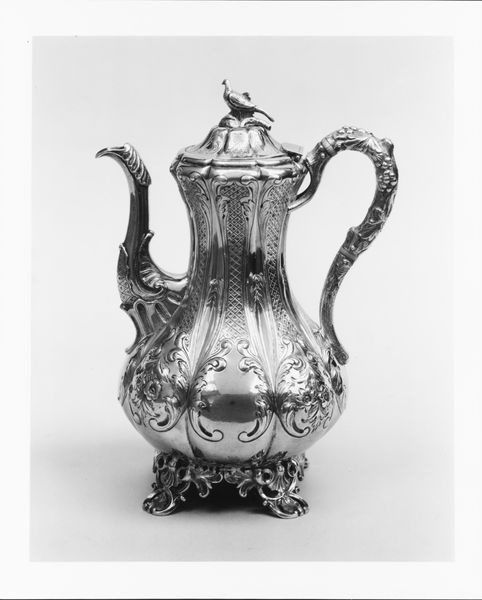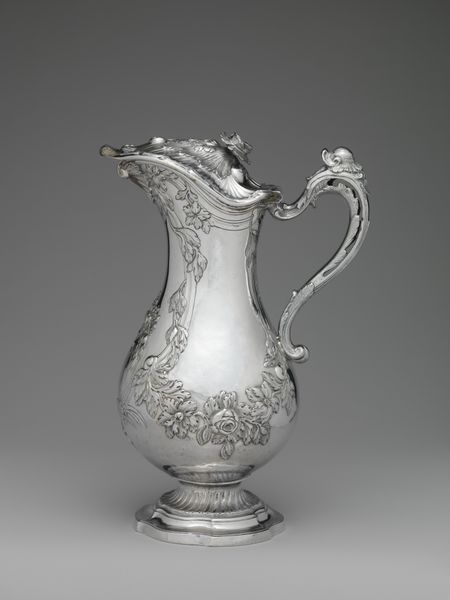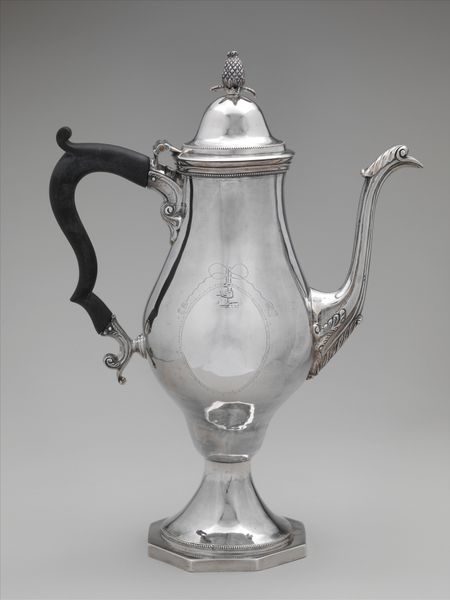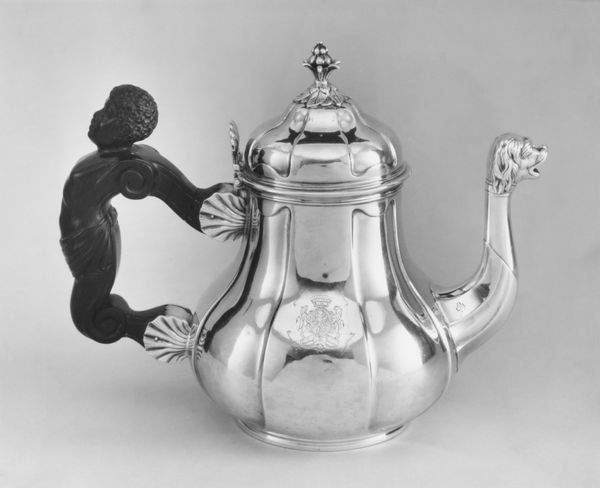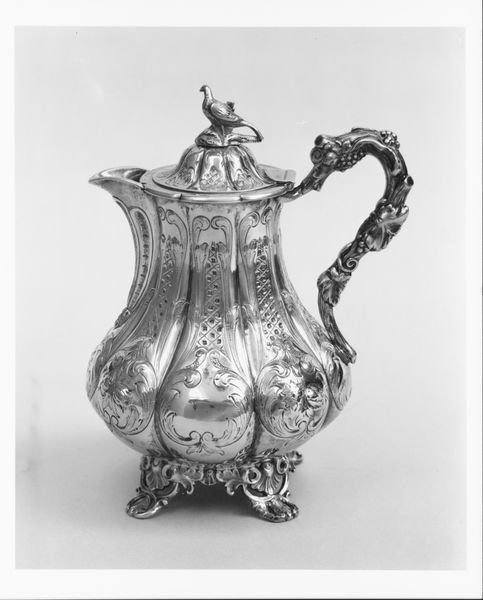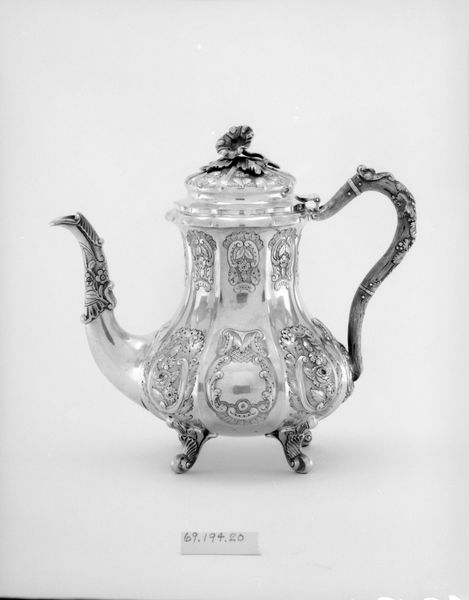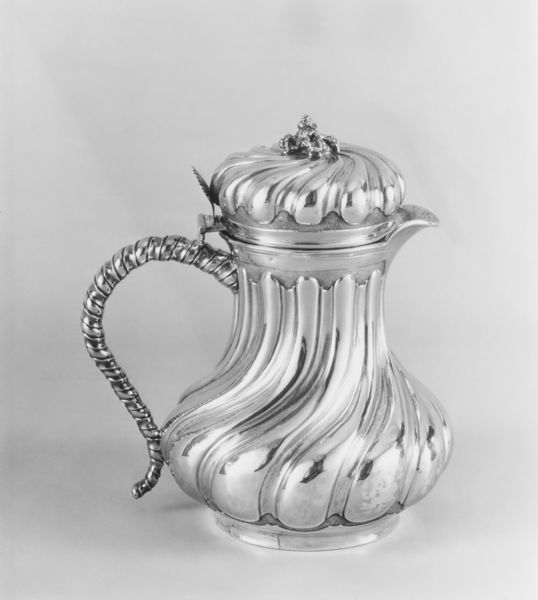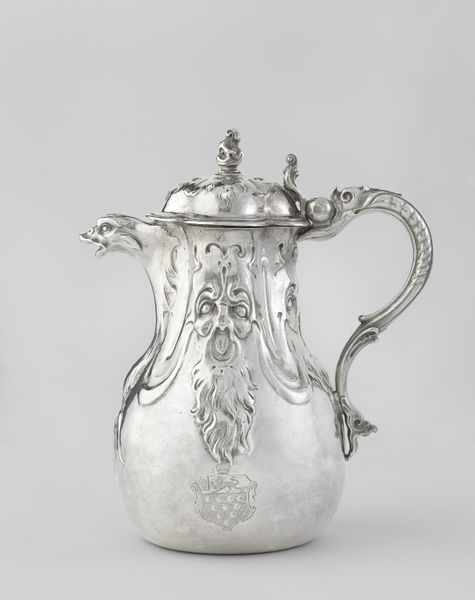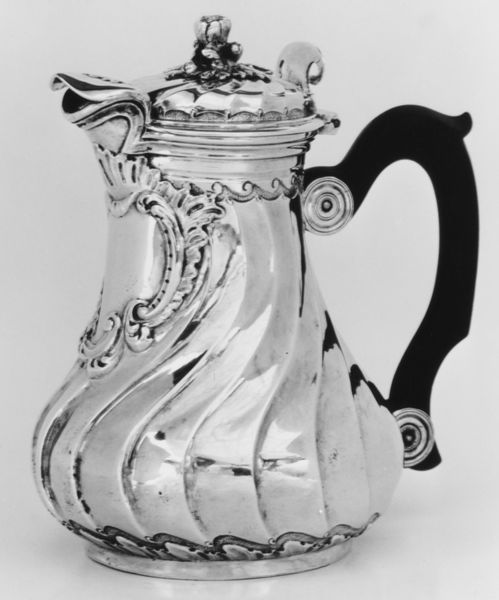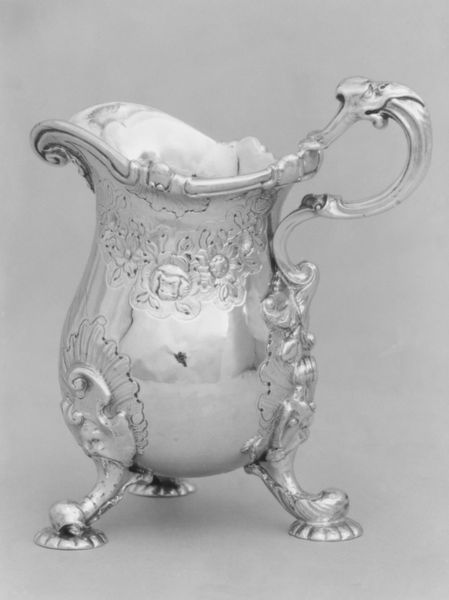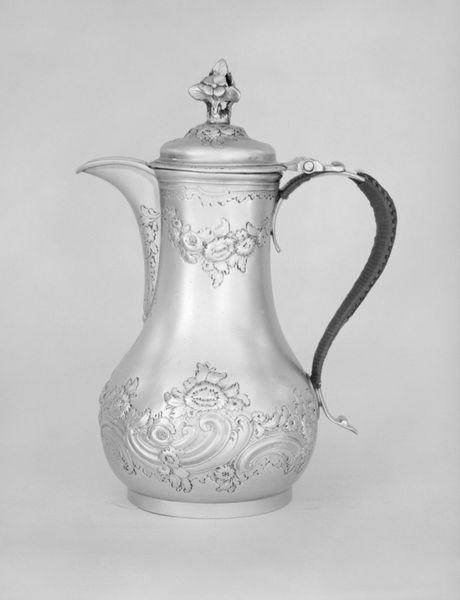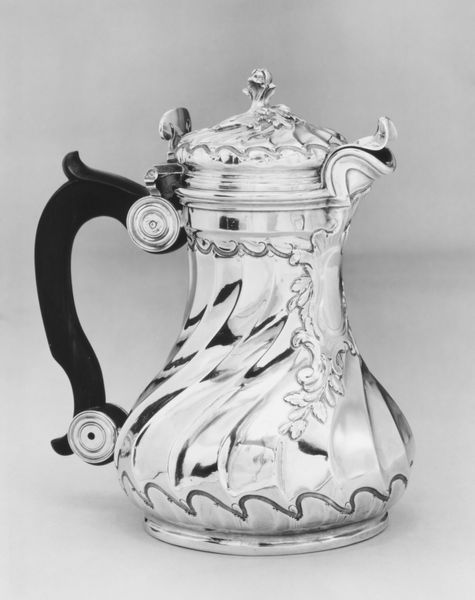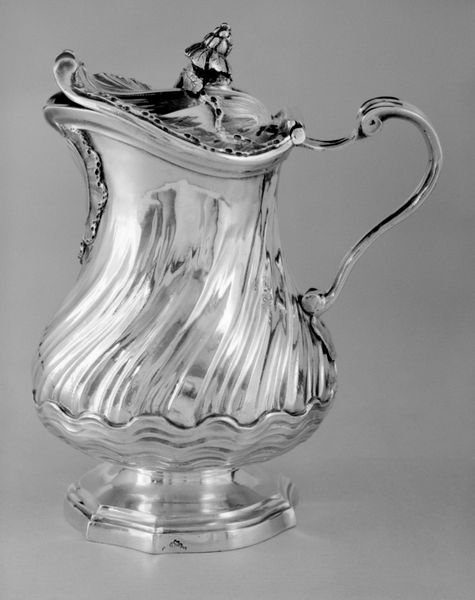
silver, metal, sculpture
#
neoclacissism
#
silver
#
metal
#
sculpture
#
black and white
#
united-states
Dimensions: 10 1/16 x 8 1/2 x 6 5/8 in. (25.6 x 21.6 x 16.8 cm); 39 oz. 4 dwt. (1219.5 g)
Copyright: Public Domain
Curator: What a dazzling object! William F. Ladd's silver water pitcher, created between 1843 and 1846, is truly representative of American Neoclassicism. Its current home is right here, at the Metropolitan Museum of Art. Editor: Its polished surface and delicate floral carvings certainly give off an aristocratic vibe, as if meant to be showcased rather than used. The intricate design almost conceals its functional purpose. Curator: Absolutely. In the mid-19th century, elaborate silverware became symbols of status and taste among the growing American upper class. Pieces like this spoke volumes about the owner's social standing. The clean, flowing lines harken back to classical forms, while the details offer a glimpse into the aesthetic values of a rapidly developing nation, eager to establish its own cultural identity through art. Editor: So it’s a deliberate act of projecting wealth and cultural sophistication, I’m curious about what the silver represents in terms of race and gender? Who was able to attain this object in relation to who likely made it? Curator: That is a critical lens to consider. These ornate pitchers are very likely the product of enslaved people. Whose forced labor propped up the entire Southern economy. By extension the opulence found here depended on exploited labor systems of the era and highlights deep intersectional relationships within American culture and production during the antebellum years. This historical consciousness reveals critical disparities and inequalities in the United States, suggesting art can never really be separated from economic reality. Editor: Right. These items reinforce an idea of cultivated taste. The family who had this in their dining room may well have spoken to abolition but they didn't acknowledge the irony when pouring a glass of water. This juxtaposition exposes art and design complicity with the system of oppression and exploitation that made such displays possible. It prompts questions around moral compromises made for the sake of appearances. Curator: Indeed. Examining how class, labor and systems of power intertwined reveals complexities which transcend simple appreciation of artistic craftsmanship. By integrating an activist-minded framework we confront this aesthetic, rather than merely admire the artistry in isolation. Editor: Food for thought, definitely changing the way I think of this decorative art! Curator: Precisely! It's through this exploration of history that we reveal something.
Comments
No comments
Be the first to comment and join the conversation on the ultimate creative platform.
